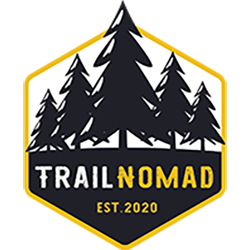Tips & tricks
Overland gear packlist
This is an example packing list that we use for our trips. Just because something is on this list doesn’t mean you need it! Not everyone has the same camping needs, and we don’t always take everything on the list every time we go out!
Basics
- Food, butter or oil and herbs
- Water
- Clothing
- Toiletries
- Toilet paper
- Sunglasses
- Charging cords
Shelter
- Rooftoptent, tent or swag
- Pegs, poles and ropes
- Mesh floor mat
- Bedding, linen or sleeping bags
- Awning
Furniture
- Camp chairs
- Camp table
- Hammock
Lighting
- Torch or headlamp
- Rechargeable lantern or work light
Kitchen
- Pots and pans
- Camp oven
- Plates, cups and utensils
- Garbage bags, paper towel, ziplock bags
- Portable fridge
- Collapsible washing-up bucket
- Environmentally friendly washing-up liquid
- Matches, firelighters and heavy-duty gloves
- Gas stove and bottle
- Tea towels and sponges
Around camp
- Bug spray
- First aid kit
- Sunscreen
- Dust pan and brush
- Saw or axe for cutting firewood
- Rope (many uses incl. clothes line)
- Clothes pegs
4WD
- Recovery gear
- Air compressor
- Maps and GPS
- Recovery tracks
- Shovel
- Off road jack
- Tire puncture repair kit
- Tools (socket set, screwdrivers etc.)
- Duct tape and zip ties
- Jump starter
Extras for remote or extended trips
- Extra water storage
- Vehicle spare parts
- Portable toilet
- Mesh mosquito tent
- 12v shower and shower/toilet tent
- Extra fuel storage
- Freezer
- Portable battery or power station
- Solar panel
Packing & planning tips
- Take your drawers to the next level and protect your gear with some cargo organisers.
- Large plastic tubs can be a lifesaver. Group similar essentials together and invest in heavy-duty plastic tubs with strong lids so that you can stack other items on top of them.
- For more space, carry bulky items such as swags, tents and mattresses on a set of roof racks. Protect these items from the weather inside a stormproof cargo bag. Roof racks are also great for awkward items.
- Look for items that pack small and flat such as collapsible buckets, foldaway tables and compact chairs.
- Pack items that have multiple uses. Why pack an axe for splitting wood and a hammer for banging in pegs when the axe will do both jobs?
- Try to keep the driver and passenger areas as free from clutter as possible.
- Before packing your 4WD, put everything you plan to take together in one spot. This will make it easier to choose what goes on the bottom and also gives you a better idea as to what is crucial and what can be left behind.
- Stay safe! Make sure there are no loose items that could pose a danger to passengers in the event of a sudden stop and make sure you don’t overload the weight of your 4WD as this can affect handling and performance. A cargo barrier is a great investment to ensure everything in the back stays in the back.
- Take note of what you don’t use after taking an item on more than one trip. If it didn’t get used, remove it from your kit (this doesn’t apply to recovery gear, tools or spare parts).
- Give yourself plenty of time. Packing can be stressful and you are more likely to forget something if you are in a rush. Give yourself enough time to pack, check and then repack if you need to.
- Grab your phone and take a photo once you’re finished packing. This can be a great reference on the day you are packing up to head home and can’t for the life of you figure out how you fit all this stuff in!

